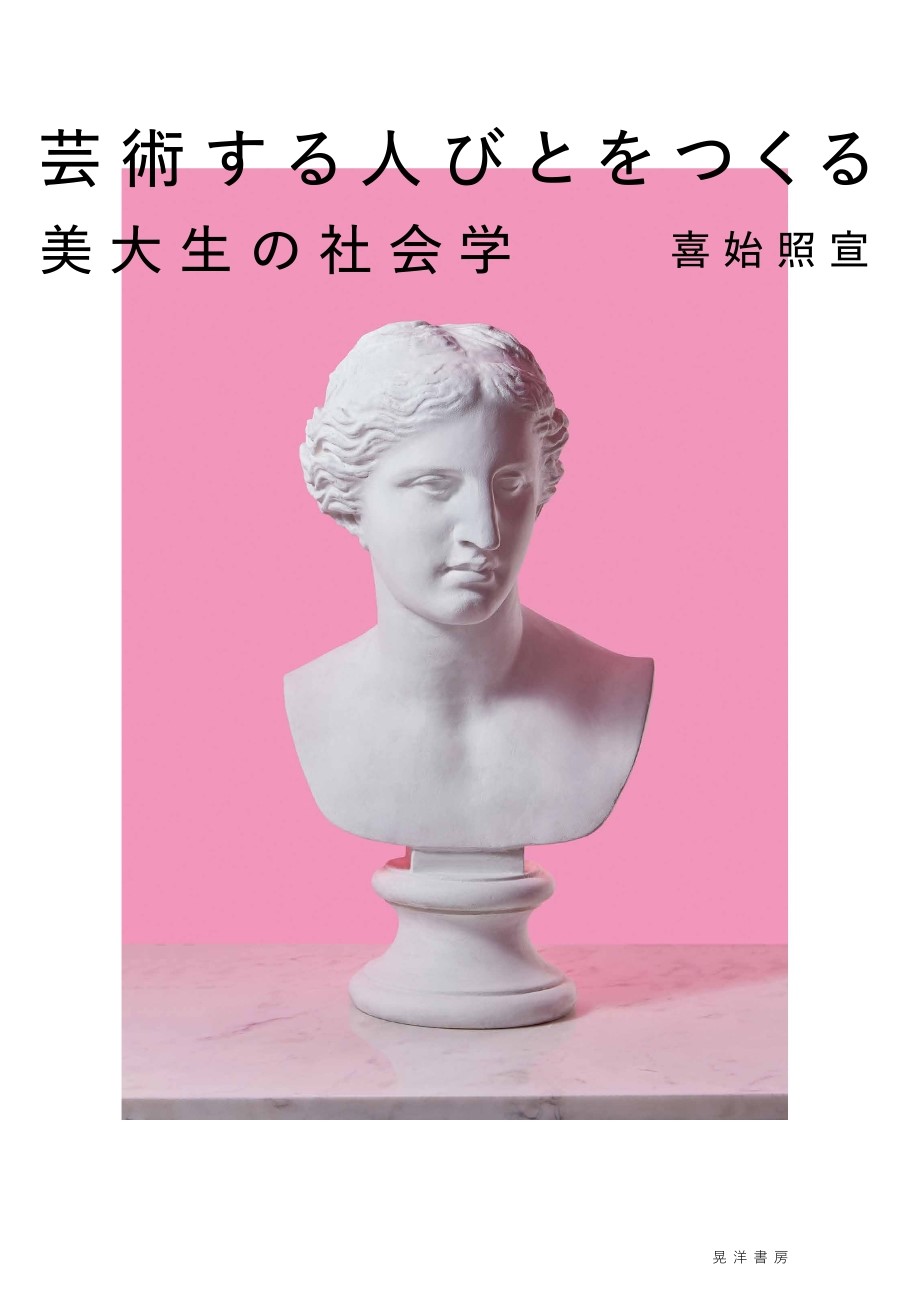
Title
Geijyutsu suru Hitobito wo tsukuru (Creating People who Produce Art - Sociology of Art Students)
Size
256 pages, A5 format
Language
Japanese
Released
March 30, 2022
ISBN
9784771035867
Published by
Koyo Shobo
Book Info
See Book Availability at Library
Japanese Page
People are created by society, and then go on to create society.
This volume aims to shed light on the process by which people who aspire to pursue a career in art are made into artists within broader society. The arts comprise various genres; however, this volume’s discussion is centered on the field of the visual arts. Although individuality and natural talent are often emphasized as requirements to become an artist, many prominent artists are now produced by professional educational institutions. Therefore, this volume focuses specifically on art colleges and departments (bidai) whose mission is to foster art and artists. Considering the life of students who are trained in such institutions (i.e., bidaisei, art students) from their childhood to university graduation, this volume attempts to answer the question of how artists are created, based on a sociological perspective.
The originality of this volume lies in its interdisciplinary approach to both higher education and art/cultural production with an emphasis on the perspectives of art students.
Of primary note is that in higher education research conducted so far, schools and students in the field of arts/fine arts have often been marginalized and have not been involved much as research participants. The two main reasons for this lack of research focus are that the number of students who specialize in the arts within the university education system tends to be small, and the arts are a field in which practical skills are important, which can make it difficult to grasp exactly how this field fits into the broader academic hierarchy.
Of course, in recent years, when considering university education, there has been a recognition of the need for theories and analyses that consider the differences in fields of specializations. However, the arts/fine arts remain “exceptions” in university education. In contrast, this book shows how it is possible to become a student of art at a college as a result of disposition-formation from childhood or social position within an individual’s school or class group. This volume also indicates that the use of art preparatory schools to prepare students to enter or take entrance examinations for art colleges may differ, depending on the region of origin and family resources. In other words, there may be unequal opportunities offered to those wishing to enter the field of the arts. For these reasons, I believe that this book can show that arts/fine arts is not an exception in education but, rather, that it shares common challenges with other fields. This volume also reveals that the choice of pursuing a career in art is limited primarily by the structure of educational opportunities.
A further highlight of this book is that it explores the education and training of artists, a topic that has not been treated as a major theme in the research on the sociology of arts and art/cultural production. Although some studies have been conducted in Japan to clarify the current status of and issues around artists’ labor and career development, little is known about the impact of educational institutions, such as art colleges, on students’ artistic practices or the ways in which they might practically enter the field of the arts.
In this context, this volume describes the current situation of the two-stage training system for visual artists in art preparatory schools and art colleges and details the issues that arise from an education system that emphasizes practical skills. Also, we were able to gain a deeper understanding of the students’ feelings regarding this system. For more details on this, please refer to this volume.
When reading this volume, I encourage you to view the art students who appear throughout the book as “the person I could have been.” Using the various figures and narratives presented in this volume, you can explore the similarities and differences between these students’ and your own experiences and ideas.
(Written by: KISHI Akinori / August 08, 2022)
Related Info
The 2nd UTokyo Jiritsu Award for Early Career Academics (The University of Tokyo 2021)
https://www.u-tokyo.ac.jp/ja/research/systems-data/n03_kankojosei.html
Related Article:
Choosing a Future Direction After Graduating from Art University: Focusing on the Students Who Have a Desire to Become Artists (Japanese Journal of Higher Education Research Vol. 18 p. 197-211 2015)
https://www.jstage.jst.go.jp/article/jaher/18/0/18_191/_article/-char/en



